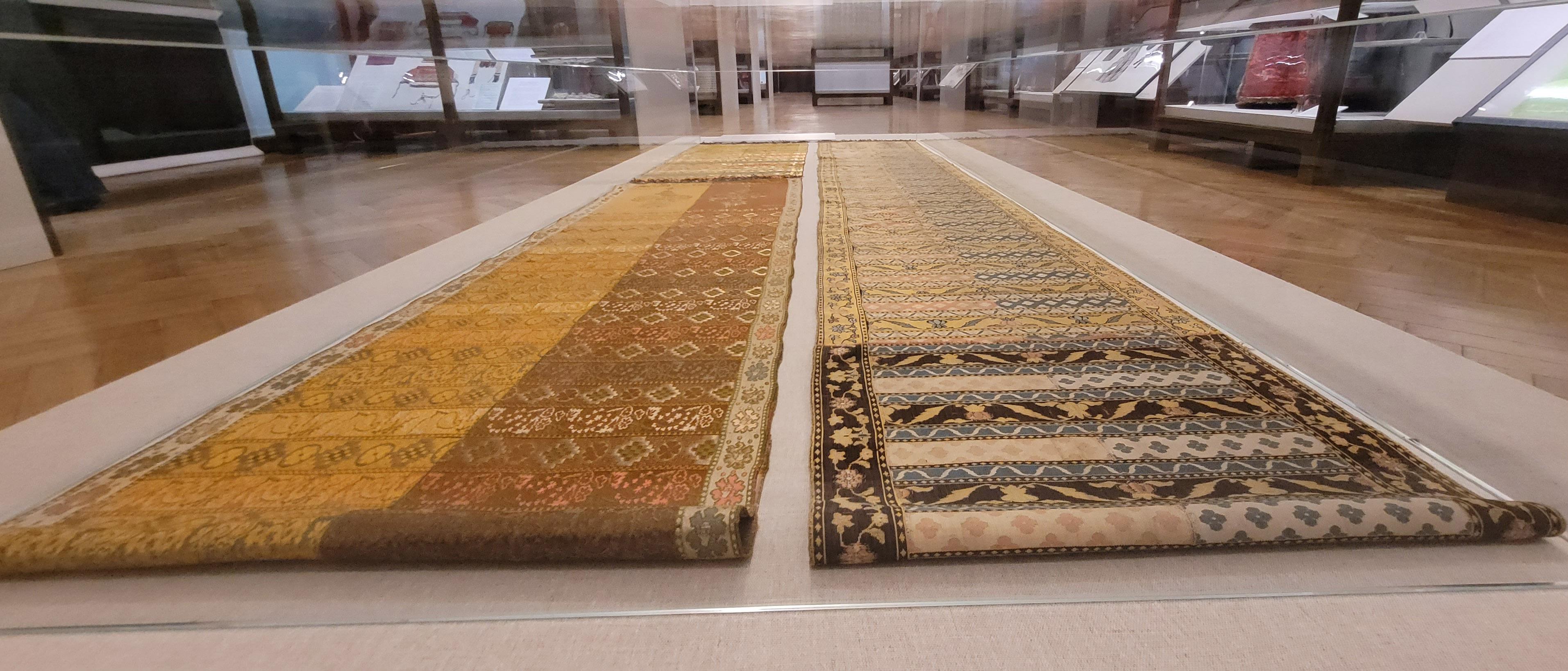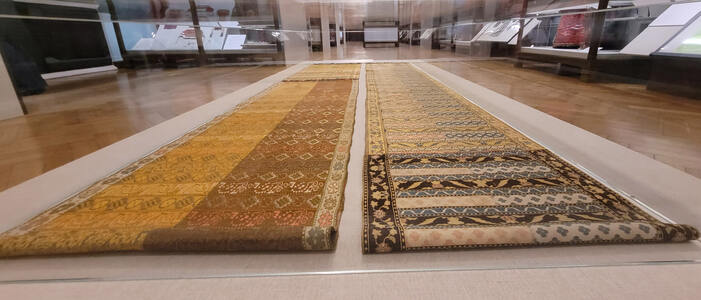Slutsk Belt

In the second half of the 18th century, the Slutsk belt was a part of the ceremonial garbs of the Polish aristocracy that highlighted the status and wealth of the owner. The belt was worn over a caftan, wrapped around the waist, with its adorned ends in the front. The belt got its name from the place of manufacture in Slutsk. The creation of the belt was inspired by the European fashion for oriental silk belts during the 17th – 18th centuries, which were brought mainly by Armenian merchants from Iran and the Ottoman Empire. Despite their high cost, the demand for silk belts was constantly rising, which contributed to the emergence of production in the Polish–Lithuanian Commonwealth. In the 1750s, to establish the production of woven silk belts, Prince Michał Radziwiłł invited Armenian craftsman Ian Magyarsky, who supervised the manufacture process, which resulted in the creation of the belt that is known as ‘Slutsky’ today.
Slutsk craftsmen used to weave scarves with handlooms using silk and golden threads. The length of a belt could vary from 2 to 4.5 m, the width was about 20–40 cm, and the decor included three parts: the middle, the trimming, and two ends. For the wealthiest clients, Slutsk belts were double-sided and four-faced, i.e., the belt had two sides that comprised two equal parts, each having its own unique pattern; the belts did not have a wrong side.
With the annexation of a part of the Polish–Lithuanian Commonwealth territories by the Russian Empire, Slutsk belts went out of fashion; production gradually declined. In the 19th century, some belts kept as heirlooms were donated to churches, where the fabric was used in the manufacture of church clothing. At the same time, collectors developed an interest in them as art objects. Slutsk belts were acquired for personal collections; later, they would often end up in museums.



